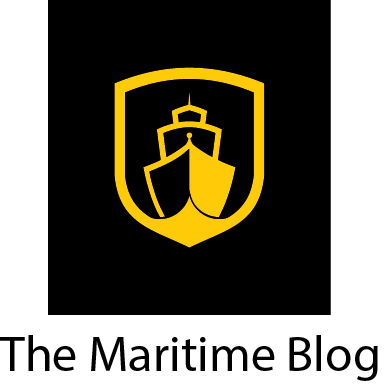
10 Hours of Ambient Arctic Sounds Will Help You Relax, Meditate, Study & Sleep
Not too long ago, we featured for you 4 hours of ambient music created by Moby, all of which you can download for free, and use to sleep, meditate, do yoga and generally not panic. Sound timely? Then download away.
Relax Sleep ASMR YouTube channel has also assembled a “video” offering 10 hours of Arctic ambient music, featuring the sounds of the frozen ocean, ice cracking, snow falling, [an] icebreaker idling and distant howling wind.”
Click (the image) above, (hit Play) and enjoy “white noise sounds generated by the wind and snow falling, combined with deep low frequencies with delta waves from the powerful … idling engines” of a Polar Icebreaker. Very chill.
see also:
42 Hours of Ambient Sounds from Blade Runner, Alien, Star Trek and Doctor Who



500 LB Black Marlin Takes Kayaker For A Ride


The B-24 was used extensively in World War II. It served in every branch of the American armed forces, as well as several Allied air forces and navies, and saw use in every theater of operations. Long range anti-submarine Liberators played an instrumental role in in the Battle of the Atlantic. The B-24 was produced in very large numbers. At nearly 19,000 units, with over 8,000 manufactured by Ford Motor Company, it holds the distinction of being the most produced heavy bomber in history, the most produced multi-engine aircraft in history and the most-produced American military aircraft.
Liberators operated from both sides of the Atlantic with the Royal Canadian Air Force and the Army Air Forces Antisubmarine Command and later, the US Navy conducting patrols along all three American coasts and the Canal Zone.

For 12 months, No. 120 Squadron RAF of Coastal Command with its handful of much-patched and modified early model Liberators supplied the only air cover for convoys in the Atlantic Gap, the Liberator being the only warplane with sufficient range. Liberators were credited in full or in part with 93 U-boat sinkings.
B-24s were also used by the U.S. Coast Guard, U.S. Navy, and U.S. Marine Corps for ASW, anti-ship patrol, and photographic reconnaissance in the Pacific Theater. In all, 18,482 B-24s were built by September 1945. Twelve thousand saw service with the USAAF, with a peak inventory in September 1944 of 6,043. The U.S. Navy received 977 PB4Y-1s

RMS Laconia (port of registry Liverpool) was a Cunard ocean liner, built by Swan, Hunter & Wigham Richardson (Wallsend, Tyne and Wear) in 1921. At the outbreak of World War II she was converted into an Armed Merchant Cruiser, then later a troopship. Like her predecessor, (sunk during the First World War) this Laconia was also destroyed by a German submarine. Some estimates of the death toll have suggested that over 1,649 people were killed when the Laconia sank. more
On 8 September 1925, Laconia collided with the British schooner Lucia P. Dow in the Atlantic Ocean 60 nautical miles (110 km) east of Nantucket, Massachusetts, United States. Laconia towed the schooner for 120 nautical miles (220 km) before handing the tow over to the American tug Resolute. On 24 September 1934 Laconia was involved in a collision off the US coast, while travelling from Boston to New York in dense fog. It rammed into the port side of Pan Royal, a US freighter. Both ships suffered serious damage but were able to proceed under their own steam. Laconia returned to New York for repairs, and resumed cruising in 1935.
On 12 September 1942, at 8:10 pm, 130 miles (210 km) north-northeast of Ascension Island, Laconia was hit on the starboard side by a torpedo fired by U-boat U-156. At the time of the attack, the Laconia was carrying 268 British soldiers, 160 Polish soldiers (who were on guard), 80 civilians, and 1,800 Italian POWs. An explosion in the hold instantly killed many of the Italian prisoners. The vessel quickly took a list to starboard before it settled heavily by the stern.

The Psychedelic Pollution Floating in the Gowanus Canal
For his Gowanus Waters photographs, published last year in a monograph by Powerhouse Books, New Yorker Steven Hirsch brings his lens so close to the toxic surface of the heavily polluted Brooklyn waterway, you may worry about his health. The results are strangely mesmerizing; transforming the burbling brew from more than 150 years of industrial runoff into psychedelic abstractions.
Some of its “black mayonnaise,” a grotesque mix of coal tar, heavy metals, and PCBs lining the canal’s bottom, along with old boats, tires, ragged metal, and even boulders, was dredged late last year… though it’s possible the cleanup plan could be delayed under the (current) administration.
Sadie Horton, Merchant Mariner and WWII Veteran
Women have fought in every U.S. war since the American Revolution, and it was no different during World War II. American women took their place beside men and children in defense plants manufacturing supplies for the war effort.
Women also served in the U.S. military and in the U.S. Merchant Marine, with some earning the nation’s highest honors. Unfortunately for the women serving in the Merchant Marine during the war, they were never issued merchant mariner’s credentials, which meant they were also denied U.S. veteran status at the war’s end.
On February 15, 2017, after seventy-five years of waiting, Sadie Carrie Owney Horton was issued a U.S. Military DD 214 and is now recognized as a WWII veteran of the U.S. Merchant Marine.
keep reading on The Maritime Executive

World’s first aircraft carrier restored after it was found rusting on the banks of the Thames
The only surviving example of the world’s first aircraft carrier which measures just 58ft long has been restored and is soon going on display at the Fleet Air Arm Museum in Somerset. A far cry from the Royal Navy’s new 920ft aircraft carrier Queen Elizabeth, the tiny boat could carry just one plane which was launched by towing it behind another boat into the wind. The simple vessels were used to launch Sopwith Camels from the middle of the sea so they could attack German gasbags before they reached Britain.

The only existing example of the craft, called a seaplane lighter, was discovered in 1996 by a passing naval historian rusting on the banks of the River Thames, and was salvaged by experts at the Fleet Air Arm Museum who have spent the last 12 years restoring it to its former glory.

‘It’s incredible to compare it to aircraft carriers of today, but believe it or not this is where it all started.’ said Morris.
The deadly effect of the basic craft was displayed on August 10, 1918 when Lieutenant Stuart Culley took off from one for the first time. After completing the daring launch, Lt Culley climbed to 19,000ft before opening fire on zeppelin L53, sending the giant airship down in a ball of flame into the North Sea. The mission was so successful the Germans, petrified of the Brits’ new aerial capabilities, stopped all zeppelin attacks on Britain. More on The Daily Mail

The Wreck of the Mary D. Hume
This historic steamboat is scuttled just a few hundred feet from where it was built over a hundred years ago

Dateline Maine: Documentary film project focuses on Moosehead Lake’s sunken treasure
Growing up on quiet and isolated Moosehead Lake in the 1980s, where his father was a fishing guide, Ryan Robbins heard stories about the days when dozens of steamboats ferried swells from New York or Philadelphia to elegant hotels or rambling camps.
And he wondered, what happened to them? keep reading


Sand mining: the global environmental crisis you’ve probably never heard of
Times are good for Fey Wei Dong. A genial, middle-aged businessman based near Shanghai, China, Fey says he is raking in the equivalent of £180,000 a year from trading in the humblest of commodities: sand.
Fey often works in a fishing village on Poyang Lake, China’s biggest freshwater lake and a haven for millions of migratory birds and several endangered species. The village is little more than a tiny collection of ramshackle houses and battered wooden docks. It is dwarfed by a flotilla anchored just offshore, of colossal dredges and barges, hulking metal flatboats with cranes jutting from their decks. Fey comes here regularly to buy boatloads of raw sand dredged from Poyang’s bottom. He ships it 300 miles down the Yangtze River and resells it to builders in booming Shanghai who need it to make concrete. The demand is voracious. keep reading on The Guardian

Rapid urbanisation has made an ordinary commodity suddenly precious: sand. As cities continue to voraciously need concrete, glass and asphalt, illegal sand mining has sparked a global wave of gang violence. more

*In 1363, the Battle of Lake Poyang took place there, which China claims was the largest naval battle in history.
The lake has also been described as the “Chinese Bermuda Triangle”. Many ships have disappeared while sailing in it. On 16 April 1945, an Imperial Japanese Navy ship, carrying loot from the Japanese Occupation of China, vanished without a trace with 200 sailors aboard. wikipedia

Moyer Bros., druggists in Bloomsburg, Pennsylvania, manufactured and sold Oil of Gladness and other patent medicines. The labels on bottles of Oil of Gladness claimed that it cured a variety of maladies: “A popular remedy for sore throat, coughs, colds, croup, sprains, wounds, bruises, neuralgia, earache, frosted feet or chilblain, and whooping cough.”

Fancy owning a naval ship? LÉ Aisling to be auctioned
Vessel involved in some of the most dramatic events in Irish Naval history
The last Irish Naval Service ship to be built at Verolme Cork Dockyard is to go under the hammer at auction in Cork next month, some nine months after it was decommissioned from service. The LÉ Aisling will be put up for auction on March 23rd and Cork auctioneer Dominic Daly will seek to obtain the best price for the State for the ship.

Tattooing Was Illegal in New York City Until 1997
The New-York Historical Society’s newest exhibit delves into the history of the city’s once-turbulent ink scene
Smithsonian – This is just one of the many interesting facets of the city’s storied ink history covered in “Tattooed New York,” an exhibition dedicated to epidermal art and its history that is on display through April 30 at the New-York Historical Society Museum and Library.

“From the research I’ve done and the tattoo artists I’ve met from that era, there are various reasons [behind] why the ban took place,” Cristian Petru Panaite, assistant curator of exhibitions at the historical society, tells Smithsonian.com. “[The city claimed that there was] an outbreak of hepatitis B, while others suspected it was because the city wanted to clean up before the [1964] World’s Fair. There’s also supposedly a love story involving a city official and one of the tattooer’s wives, and that kind of turns into a personal vendetta.”

The show contains more than 250 objects, artworks, photographs, videos and other documents stretching from the early 1700s to now, including Thomas Edison’s electric pen, the percusor to the tattoo gun, and a Norman Rockwell oil painting of a man getting inked.
keep reading on Smithsonian.com

Miss Monkey’s “Blog You Should Be Following” for the Week of March 6th, 2017
After a few brief months’ hiatus from curating Adventures of the Blackgang, Miss Monkey is back with a vengeance. One of the first goodies she happened upon was a new tumblr by Charles Fox, called Containerization: Attempting to capture the beauty, mystery and intrigue of shipping containers, and yeah… it’s exactly that.
 Inspired by a fresh and thrilling buzz from that night’s 6.5% sample brew, Jack’s Abbey Hoponious Union, brewed in Framingham, Massachusetts (and which she strongly recommends) she sent along one gushing fan mail to the above mentioned Mr. Fox who responded cheerfully, providing us with the following blurb:
Inspired by a fresh and thrilling buzz from that night’s 6.5% sample brew, Jack’s Abbey Hoponious Union, brewed in Framingham, Massachusetts (and which she strongly recommends) she sent along one gushing fan mail to the above mentioned Mr. Fox who responded cheerfully, providing us with the following blurb:
For more than a decade, I have been fascinated by and constantly seeking out and photographing shipping containers. Growing up in the Chicago area, they were a constant part of the local scenery. Eventually, I came to realize that containers are an omnipresent part of the built environment worldwide, and also the enabling factor in the globalized culture we are a part of today.
I have been contributing to the two longest standing and most frequently updated container-related websites for many years: The Intermodal Container Webpage and Prefix list.
Each of these websites have a very specific bent; The Intermodal Container Webpage is an exhaustive catalog of shipping containers arranged by size, type and owner, while Prefixlist tirelessly maintains an active list of prefixes along with their owners along with useful information on ISO codes, check digits and country codes for containers and an incredible ‘Shit Happens’ section focusing on container-related accidents.
It dawned on me a few years ago that the pure aesthetics of containers take a backseat to cataloging them with documentary-style photographs of individual containers on these websites, and a place where the beauty, mystery and intrigue that drew me to shipping containers in the first place could take precedence would be a concept worth exploring. Thus, Containerization was born and continues to thrive as a place to showcase interesting content involving containers.
I welcome contributions and correspondence at [email protected]
Another concoction Miss Monkey sampled that night was Smiling Irish Bastard, a creation of the Geaghan Brothers Brewing Company in both Bangor and the aptly named Brewer, Maine. While also fine, Her Monkeyness (when given the option) returned to Hoponius Union.

see also: Penobscot Icebreaker





















